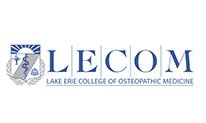Healthcare News
Does altered gait following anterior cruciate ligament surgery contribute to additional knee problems?
For people with an injured anterior cruciate ligament (ACL) in the knee, surgical ACL reconstruction (ACLR) is an effective treatment for restoring joint stability. However, many treated patients still develop additional long-term knee problems, such as knee osteoarthritis.
Neuropathic pain drugs linked to higher hip fracture risk in seniors
A new study by Monash University medicine safety experts found the use of gabapentinoids—medicines widely used to treat neuropathic pain—increased the risk of hip fractures, especially in older patients who were frail or had kidney disease.
Examination of the Knee
A knee examination is usually the first step in determining the cause of knee pain. During this exam, your healthcare provider may do knee tests designed to evaluate knee function and range of motion.
Use of gabapentinoids may be associated with increased risk of hip fracture
According to published results, the use of gabapentinoids may be associated with an increased risk of hip fractures in older, frail patients and patients with chronic kidney disease.
Knee problems tend to flare up as you age—an orthopedic specialist explains available treatment options
Knee injuries are common in athletes, accounting for 41% of all athletic injuries. But knee injuries aren't limited to competitive athletes. In our everyday lives, an accident or a quick movement in the wrong direction can injure the knee and require medical treatment. A quarter of the adult population worldwide experiences knee pain each year
Hip implant study identifies materials with the lowest risk of needing revision
Hip implants with a delta ceramic or oxidized zirconium head and highly crosslinked polyethylene liner or cup had the lowest risk of revision during the 15 years after surgery, a new study led by the University of Bristol has found. The research could help hospitals, surgeons and patients to choose what hip implant to use for replacement surgery.
How to Strengthen Your Knees: Expert Tips
If you want to stay active and mobile, healthy knees are essential. Muscle imbalances, age-related joint changes, and injuries can all affect the health of your knees — and if your knees are weak, you’re more prone to sprains, strains, and even severe injuries like torn ligaments. In this article, we’ll explore the science behind knee strengthening, and the best exercises to get your knees strong.
Study finds 41% of people have 'creaky knees'
La Trobe researchers have discovered that almost half the population has "creaky knees" in a study investigating how common the problem is and what it means for the health of our knees.
Navigation-assisted hip resurfacing may improve acetabular component positioning
Hip resurfacing may be an acceptable alternative to hip arthroplasty for hip osteoarthritis, with positive outcomes at 2-year follow-up.
Symptoms and Treatment of Different Types of Kneecap Injuries
A kneecap injury can happen from a blow to the knee or a fall. Some injuries can also occur due to overuse. When you injure your kneecap—also called your patella—there may be damage to the surrounding soft tissues, such as a patellar tendon tear, or a fracture to the bone.











